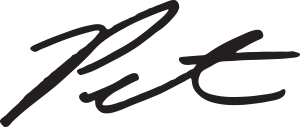Part 1: The Parent Hack to Advancing Relationships
Enhanced Employee Engagement
Part 1: The Parent Hack to Advancing Relationships
With or without a crisis, employee engagement is essential for success today. Yet, creating and sustaining the kind that matters most and drives growth remains elusive for too many leaders and organizations.
As organizational leaders, we don’t need to look far to find the answer… as the best way to create an attractive and productive state of mind and being in our employees is what will also make us successful on the home-front.
Inspired by a recent sermon, the parallels between good parenting and enhanced employee engagement became immediately clear… and even comforting knowing that many of us can advance a “2 for 1” strategy.
The Foundational Role of Relationships
Three things have had a profound impact on our lives, our careers, and our organizations to date:
- Our choices,
- Our experiences, and
- Our relationships
These same elements will also impact where we end up.
This series starts with a focus on the foundational role of relationships.
The Problem with Scale
When we grow as leaders and organizations we take on more. In order to avoid overwhelm and burnout, and not have things fall through the cracks, we need to scale.
“Scaling” for most teams and organizations today only includes adding people, processes, and priorities. Along the way, there is often compromise as we focus on “have to haves” and “KPIs” (key performance indicators).
Ironically, people-related issues associated with engagement, culture, and growth are treated by most leaders and organizations as “nice to haves” and fall prey to the “higher priorities” of production.
Even the strongest and most-committed relationships erode without continued care and attention.
“As leaders, we can’t automate, outsource, or overlook the relationships that matter most and drive growth.”
-Peter C. Atherton
The Nature of Erosion
Erosion is often slow, subtle, and silent… but can create significant and sometimes even permanent changes (think Grand Canyon, for example).
This is not only the case in nature, it is also the case for relationships.
Strained and eroded relationships are never good. Their presence often leads to the consumption of goodwill and increased frustrations. In the workplace this helps fuel the Burnout-Disengagement Cycle.
Even when systems to manage and control forces are designed well, they require attention, maintenance, and periodic updates.
The reality is, however, that most leaders and organizations don’t really prioritize people or the design and maintenance of systems to maximize employee growth and retention.
This creates persistent erosive forces at the office and happens for two reasons:
-
- First, it is just so hard for many to break from embedded industrial-era thinking. Today we talk more and more about “our greatest assets” and even add some pretty cool benefits, but is this more about risk management? At their core, do most leaders see people as commodities and mostly interchangeable?
- Second, we are too busy. Our busyness erodes all of our relationships – including the one with ourselves. On the work-front, our “Availability” is the #1 top leadership trait to thrive today.
If we want to begin to prioritize people, we need to prioritize relationships. To do so as leaders, we need to build in “capacity” by appropriately prioritizing our time.
Consistently spending quality time serving, supporting, and encouraging those in our care is the only way to create, grow, and maintain (or rebuild!) relationships that matter.
“Leaders need to decide whether they have the courage and conviction to lead in new ways that increase their influence… or continue with the old ways that erode their relevance.”
-Peter C. Atherton
Relationship Advancement
The referenced sermon specifically outlined a logical progression to advance our relationship with our kids. The goal is to help position kids for success by positioning parents and care-givers for “positive influence” as kids experience life and begin to make choices on their own.
The general outline included a focus on appropriate:
- “Discipline” for children ages 1 or 5,
- “Training” from ages 5 to 10,
- “Coaching” from ages 10 to 18”, and
- “Friendship” from ages 18 and up as a formula for success.
Skipping a stage would create gaps and not progressing to the next stage would cause conflict, confusion, and eventual disengagement.
A similar approach to relationship advancement also applies in the workplace as we progress through our careers.
Below is a graphic from my book, Reversing Burnout. How to Immediately Engage Top Talent and Grow! A Blueprint for Business Owners and Professionals, that I use to explain our distinct work seasons:

During our “Master Our Craft” season, when we learn the standards of performance and excellence needed for career and organizational success and become proficient in our chosen professions, a combination of “discipline” and “training” is essential.
The shift to our “Make a Name” season, when we leverage our proficiency to larger and more complex assignments and when we typically take on more management and leadership roles through successive promotions, should mark a shift toward more “coaching”. In this context, supervisors and employees would routinely think through goals, identify the reality of situations and hurdles, layout options, and develop the best steps forward for the unique circumstance at play – maximizing both engagement and performance.
Inevitably, once we’ve established ourselves professionally and enjoyed a level of success, many of us move toward a “fork in the road” when we begin to ask some of the bigger questions about life and seek greater meaning and purpose both inside and outside the office.
At work, most of us transition into our “Make a Difference” and “Leave a Legacy” seasons. Organizational success during these seasons requires a higher level of mutual understanding, respect, and trust more akin to “friendship”, as well as, an expansion of both personal and professional growth to maintain engagement.
Leadership that doesn’t progress to this point will lose the opportunity to best leverage the skills, talents, assets, gifts, and experiences of its most seasoned talent.
Successful relationships are essential to winning both on the home-front and at the office.
Organizationally, top leaders are enhancing their position and performance, and reducing the costs of employee turnover, by proactively taking on the challenge of employee engagement and building the types of relationships designed to go beyond just a great “employee experience”.
To your winning,

PS – Ready to increase your engagement and your impact? Check out our Fast Start Programs.
PSS – Want to hear more about employee engagement and how you, your team, and your organization can grow and prosper in the new era? Check out the AEC Leadership Today Podcast >> HERE!

Pete Atherton
About the Author
Peter C. Atherton, P.E. is an AEC industry insider with over 30 years of experience, having spent more than 24 as a successful professional civil engineer, principal, major owner, and member of the board of directors for high-achieving firms. Pete is now the President and Founder of ActionsProve, LLC, author of “Reversing Burnout. How to Immediately Engage Top Talent and Grow! A Blueprint for Professionals and Business Owners”, and the creator of the I.M.P.A.C.T. process.
Pete is also the host of The AEC Leadership Today Podcast and leads The AEC Leadership Mastermind.
Pete works with AEC firms to grow and advance their success through modern and new era focused strategic planning, executive coaching, leadership and management team development, performance-based employee engagement, and corporate impact design. Connect with him through the contact link below.


